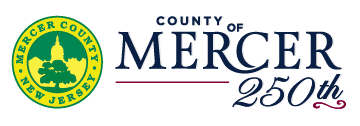Loading...
No Records Found
Sorry, no records were found. Please adjust your search criteria and try again.
Maps failed to load
Sorry, unable to load the Maps API.
Favorite
Year Constructed/Founded: Original tavern: pre-1776; Building: modern
This was the site of the French Arms Tavern, where the Continental Congress met temporarily in 1784. Also known as the City Tavern and Thirteen Stars Tavern. It played a vital role as a political and social hub during and after the Revolution. Read more...
Favorite
Year Constructed/Founded: Original Home: c. 1760
Original site where Washington plotted the next day’s attack on Princeton after the second Battle of Trenton. Though relocated, its historical significance remains. Now near the Lutheran Church, it remains a symbol of strategy and courage. Read more...
Favorite
Year Constructed/Founded: Dedicated: 1922
Commemorates the Battle of Princeton on January 3, 1777. The monument honors General Washington’s leadership and the Continental Army’s victory. It serves as a prominent landmark in downtown Princeton. Read more...
Favorite
Year Constructed/Founded: Battle: 1777; Clarke House: Built 1772
This park preserves the location of the Battle of Princeton, where George Washington led a surprise counterattack on January 3, 1777. The victory helped restore American morale after setbacks in New York and demonstrated the resilience of the Continental Army. The site includes interpretive trails, commemorative monuments, and reenactments that vividly bring this battle to life. Read more...
Favorite
Year Constructed/Founded: Established: mid-1700s
This historic cemetery is the final resting place of prominent Revolutionary War figures, including John Witherspoon—signer of the Declaration of Independence and president of Princeton University—and Aaron Burr, a Continental Army officer who later became Vice President of the United States. Their graves, along with others, offer a powerful connection to the political and military leadership of the Revolutionary era. Read more...
Favorite
Year Constructed/Founded: Original: 1726; Current: 1760s
Meeting house tied to the Stockton family and Quaker faith. Burial site of Richard Stockton, Declaration signer. Offers historical insight into both pacifist Quaker beliefs and patriotic sacrifice. Read more...
Favorite
Year Constructed/Founded: Built: 1739
This Quaker meeting house served as a neutral space during the Revolution. It was located near troop movements and activity in Trenton. Reflects the tension Quakers faced between pacifism and patriotism. Read more...
Favorite
Year Constructed/Founded: Original built: 1726; Rebuilt: 1760
This simple yet significant building was a central place of worship and assembly for Quakers, who were known for their pacifist stance. Despite their neutral beliefs, Quakers were caught in the midst of the Revolutionary conflict, and the site witnessed movements of both British and American troops. It offers a unique perspective on religious tolerance and civic responsibility during wartime. Read more...
Favorite
Year Constructed/Founded: Used as HQ: 1783; house dates to mid-1700s
Rockingham served as General George Washington’s final wartime headquarters in 1783. It was here that he wrote his “Farewell Orders to the Armies of the United States,” marking the end of the Revolutionary War. Today, the site is carefully preserved and offers guided tours that highlight its pivotal role in the conclusion of America’s fight for independence. Read more...


